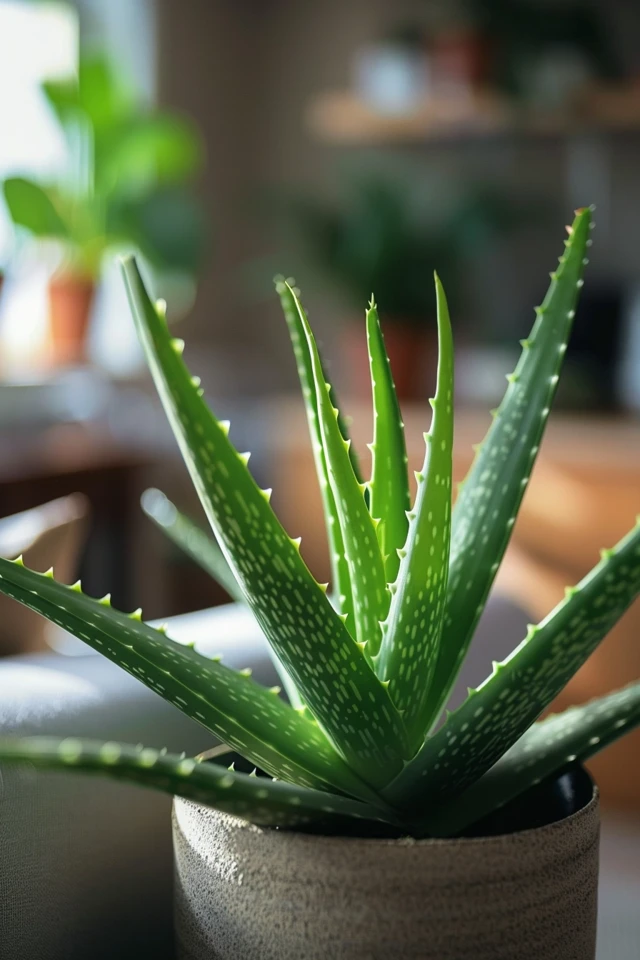Hello there! If you’re a plant enthusiast like me, you know how gratifying it is to witness your beloved aloe vera plant thriving and growing. Aloe vera, with its healing properties and air-purifying abilities, is a popular succulent that can enhance the beauty of any indoor space.
But here’s the thing – aloe vera plants have a naturally slow growth rate, sometimes taking up to 4 years to reach maturity. So, how can we speed up this process and maximize the growth of our aloe vera plants? Well, you’re in luck! I’ve gathered some expert aloe vera care tips and growth boosters that will help your plant flourish.
First things first, it’s crucial to provide your aloe vera plant with the right conditions for optimal growth. Here are some key tips to consider:
- Choose a terracotta or ceramic pot with good drainage for your aloe vera plant.
- Opt for a well-draining succulent or cactus soil to promote healthy growth.
- Water your plant deeply but infrequently, allowing the soil to dry out between waterings.
- Ensure your aloe vera gets at least 8 hours of bright, indirect sunlight daily.
- Sparingly fertilize your plant with a dilute succulent or cactus fertilizer during the growing season.
By following these aloe vera plant growth tips and implementing them into your care routine, you’ll be amazed by how quickly your aloe vera plant thrives and flourishes. So, let’s get started and watch your green companion reach new heights!

Types of Aloe Plants and Growing Conditions
When it comes to aloe plants, there are various species to choose from. Some of the popular types include Aloe Vera, Aloe arborescens, Aloe aristata, Aloe polyphylla, Aloe ferox, Aloe variegata, and Aloe mitriformis. Each of these species has its own unique characteristics and requires specific growing conditions.
One of the most well-known aloe varieties is Aloe Vera. This stemless succulent has thick, fleshy leaves and is commonly grown indoors. It thrives in well-draining soil, such as a succulent or cactus mix, which provides the necessary nutrients and prevents waterlogging.
Aloe Vera requires bright, indirect sunlight or partial shade to grow properly. It’s important to provide the plant with at least 8 to 10 hours of light per day. Too much direct sunlight can scorch the leaves, so finding the right balance is crucial.
Watering aloe vera is also essential for its growth. It’s best to water deeply but infrequently, allowing the soil to dry out between waterings. Overwatering can lead to root rot and other problems, so it’s important to avoid excessive moisture.
Fertilizing aloe vera should be done sparingly. Using a succulent or cactus fertilizer once a year during the growing season is sufficient. Overfertilization can cause the leaves to become soft and weak.
When it comes to propagating aloe vera, the easiest method is through the pups, or offshoots, produced by the mother plant. These can be carefully separated and planted in their own pots to grow into new plants.
As the aloe vera plant grows, it may outgrow its pot and become top-heavy. To prevent tipping and promote continued growth, it’s recommended to repot the plant in a wider container. This gives the roots more space to spread and develop.
Remember, each type of aloe plant has its own specific requirements for optimal growth. By understanding the needs of your chosen species, you can create the perfect environment for your aloe plants to thrive.

Harvesting and Uses of Aloe Vera
Aloe vera, known for its versatility, offers a multitude of benefits for various purposes. Whether it’s soothing sunburns, treating minor cuts and wounds, or moisturizing the skin, aloe vera is a natural go-to remedy. The gel found inside the aloe vera leaves is a treasure trove of healing properties.
Using raw aloe vera gel directly on the skin can provide relief from pain and promote healing for a variety of conditions. It’s no wonder that aloe vera is a key component in Doctor Hoy’s Arnica Boost Recovery Cream, renowned for its natural pain relief capabilities.
Harvesting aloe vera leaves is a simple process. Cut the leaves as close to the stem as possible, and you’ll have access to the healing gel. Once harvested, aloe vera gel can be used not only for burns but also as a nourishing hair conditioner, an effective makeup remover, or even as a brow gel.
For those interested in aloe vera juice, start by slitting the spike lengthwise and scoop out the contents with a spoon. However, it’s important to note that ingesting large quantities of aloe vera can be harmful to the kidneys.
To harness the power of aloe vera for pain relief and skincare, Doctor Hoy’s Arnica Boost Recovery Cream is an excellent choice. With the combination of aloe vera and other natural ingredients, it provides effective and soothing relief for those in need.


